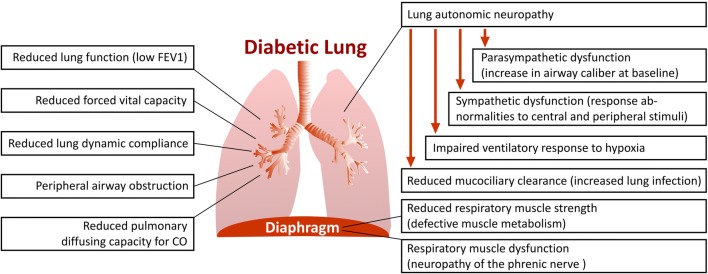Fig. 1.
Respiratory tract abnormalities in patients with diabetes mellitus. Several functional abnormalities in the respiratory tract are proven in patients with diabetes mellitus. Reduced lung function of diabetic patients characterized by low forced expiratory volume in one second (FEV1) is two to three times faster than that of normal nonsmoking subjects. Reduced forced vital capacity and lung dynamic compliance, peripheral airway obstruction as well as reduced pulmonary diffusing capacity for carbon monoxide (CO) has been reported in diabetic patients. Pulmonary autonomic neuropathy in diabetic patients, results in an impaired ventilatory response to hypoxia. In diabetic patients, sympathetic neuropathy impairs pulmonary function, resulting in ventilatory response abnormalities to central and peripheral stimuli. In this line, parasympathetic neuropathy may cause an increase in airway caliber at baseline. Pulmonary autonomic neuropathy reduces mucociliary clearance and prone the lung to the infections. Reduced respiratory muscle strength due to defective muscle metabolism and neuropathy of the phrenic nerve promote respiratory muscle dysfunction in diabetic patients

